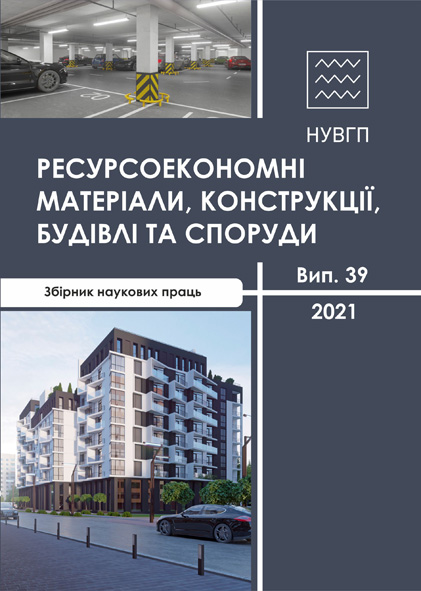MIXED METHOD OF CALCULATION OF A BUILDING WITH SUSPENDED FLOORS
DOI:
https://doi.org/10.31713/budres.v0i39.018Abstract
A method of dynamic calculation of a multi-story building, the floors of which are suspended from the supporting frame, is proposed. A system of differential equations is derived, the solution of which allows determining unknown displacements. After determining the displacements, the forces acting on the supporting structures are easily determined. It is shown that in the proposed building design, the use of Lagrange equations of the second kind leads to rather cumbersome expressions. Therefore, a mixed method was used to formulate the equations of motion. As unknown functions, the horizontal displacements of the supporting frame at the level of each floor and the angles of rotation of the threads on which the floors are suspended are taken. The first group of differential equations is compiled using the force method. The second group of equations is compiled using the d'Alembert principle. At the same time, the condition of equilibrium of each mass (which simulates one floor) is considered, which consists in the condition that the sum of the moments of all forces, including the forces of inertia, relative to the suspension point of each mass is equal to zero. This greatly simplified the compilation of the system of differential equations. It is shown that if in a particular case, a one-story frame is considered, then the system of equations completely coincides with the system obtained earlier by the author of the article using the Lagrange equations of the second kind. This proves the correctness of the adopted approach to the compilation of a system of differential equations. On the example of a one-story building, it is shown that the dynamic forces from seismic effects for the proposed building are significantly less than those in traditional buildings operating in a cantilever arrangement. As one of the variants, a building scheme is also proposed, in which part of the floors is rigidly fixed according to the traditional scheme, and part is suspended. It is also shown that when determining the forces from seismic effects, it is necessary to consider in the aggregate both the acceleration of the ground vibration and its amplitude since dynamic efforts depend on the ratio of these factors.

